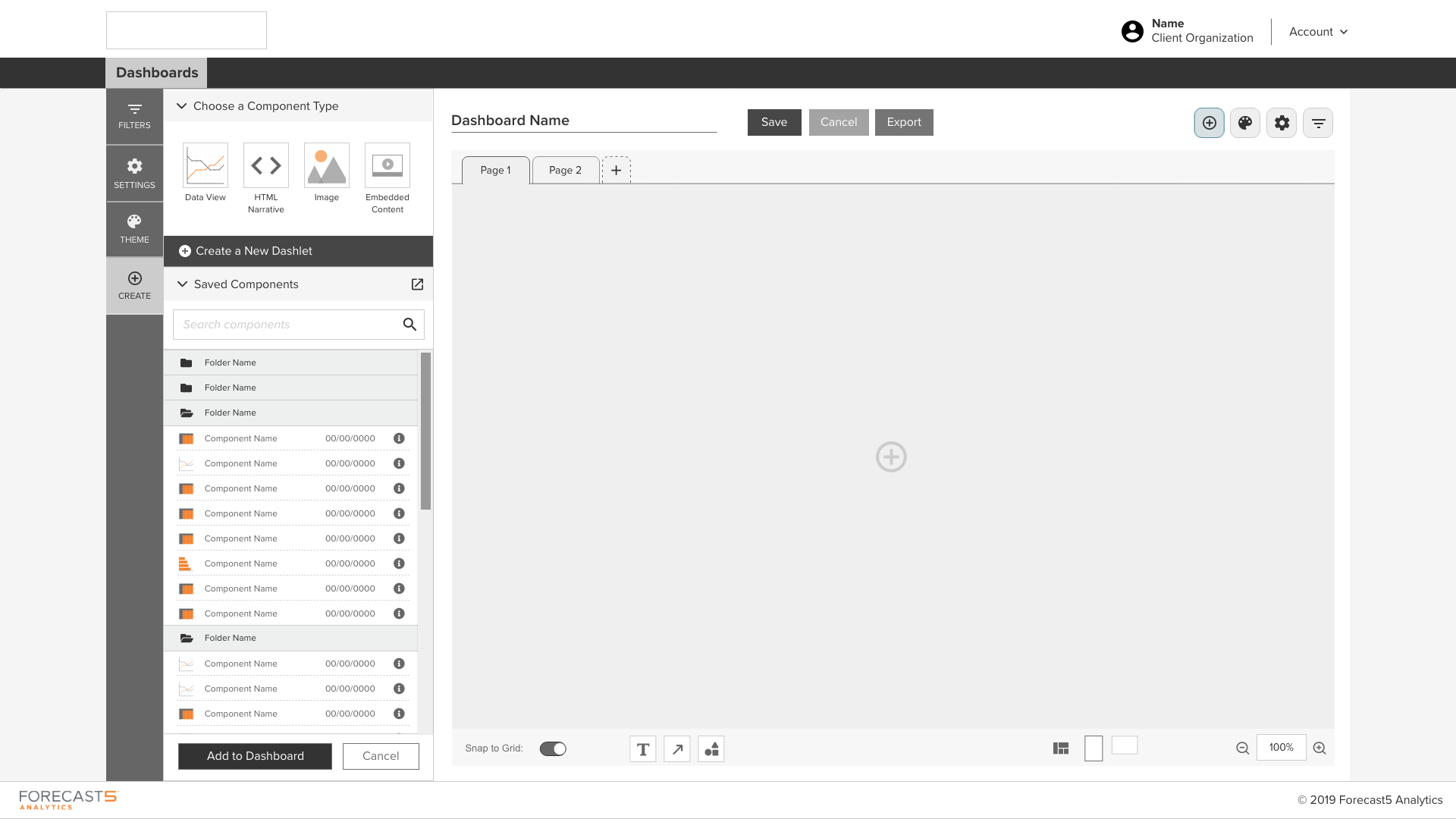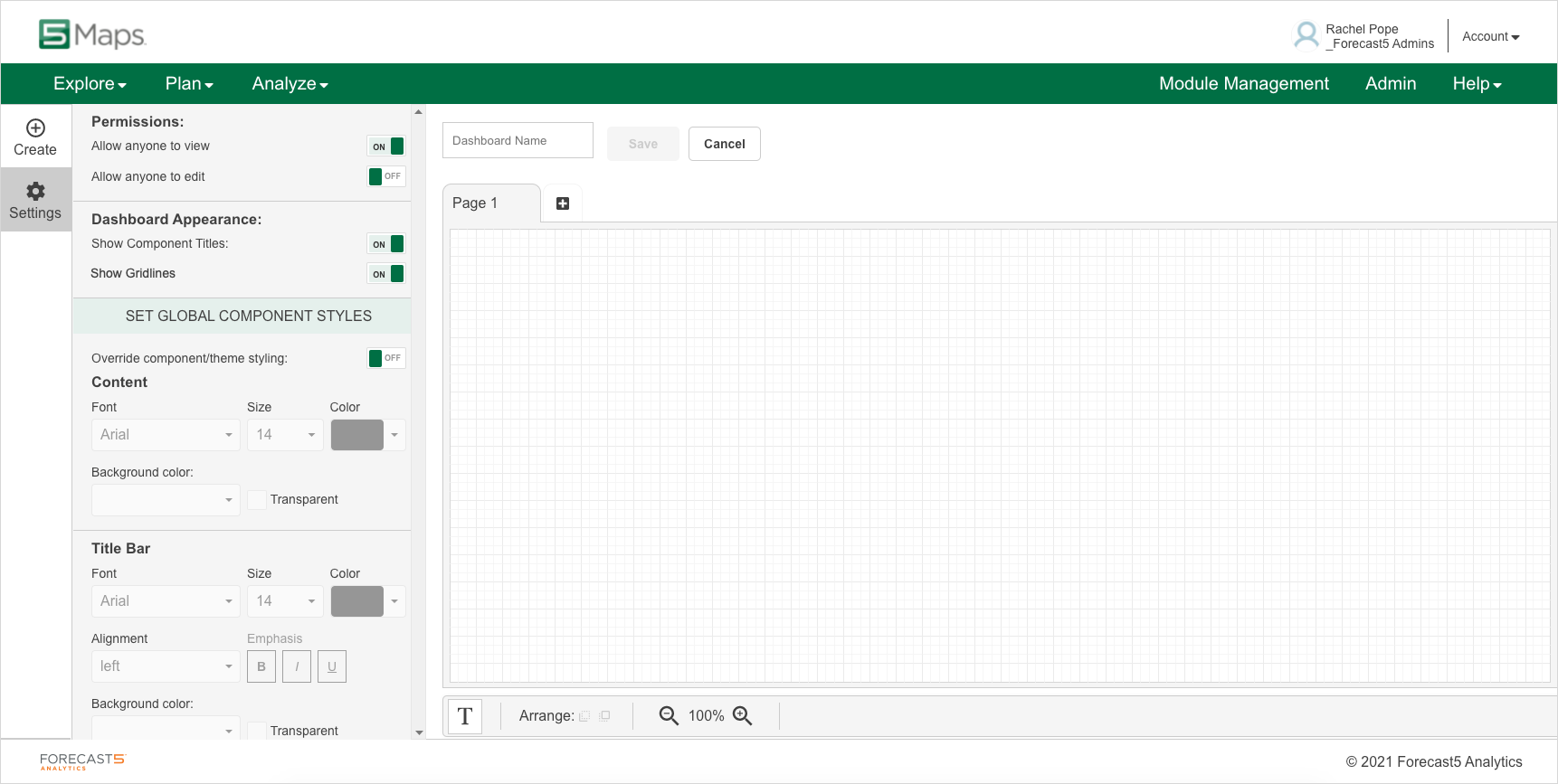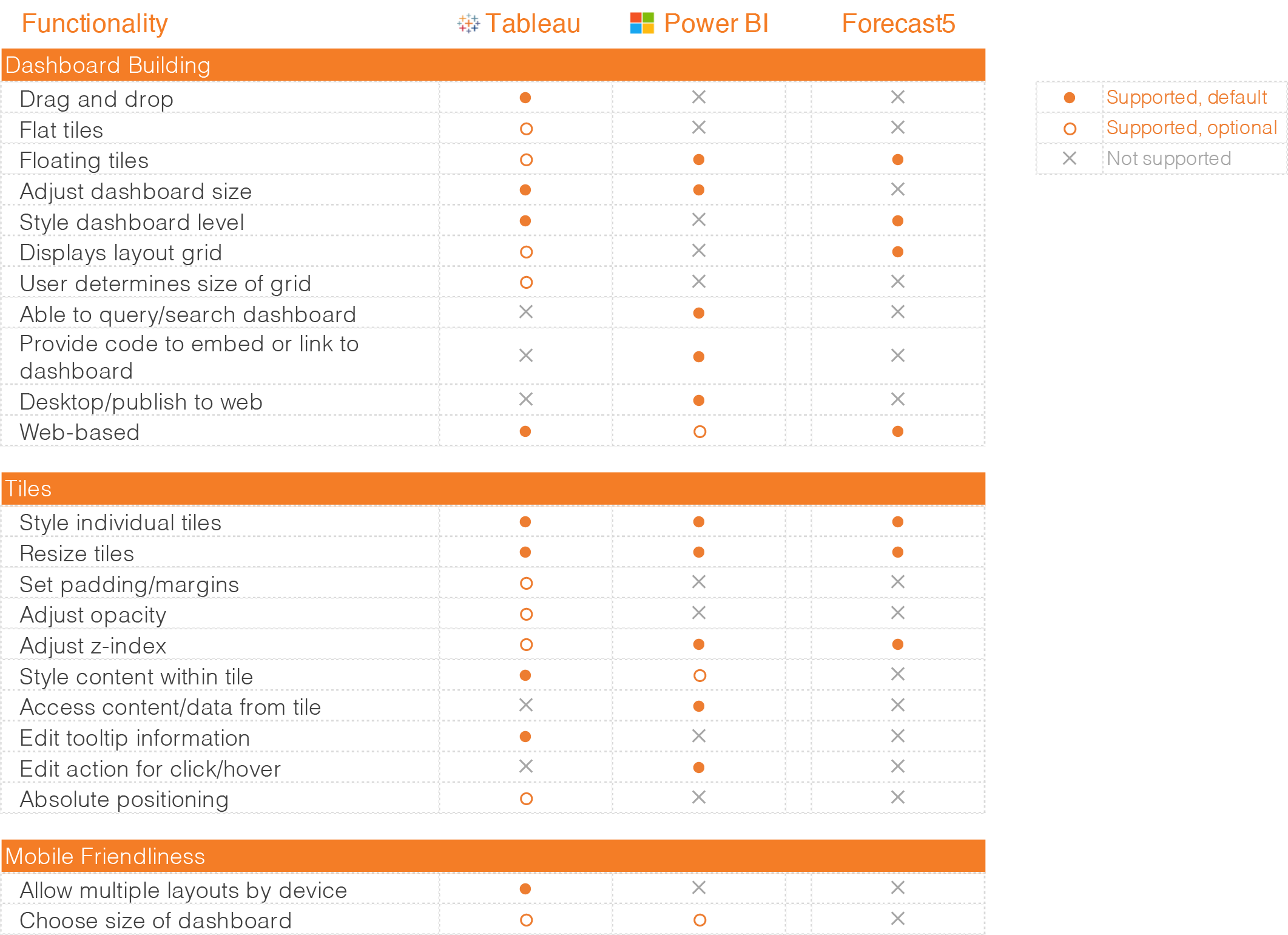
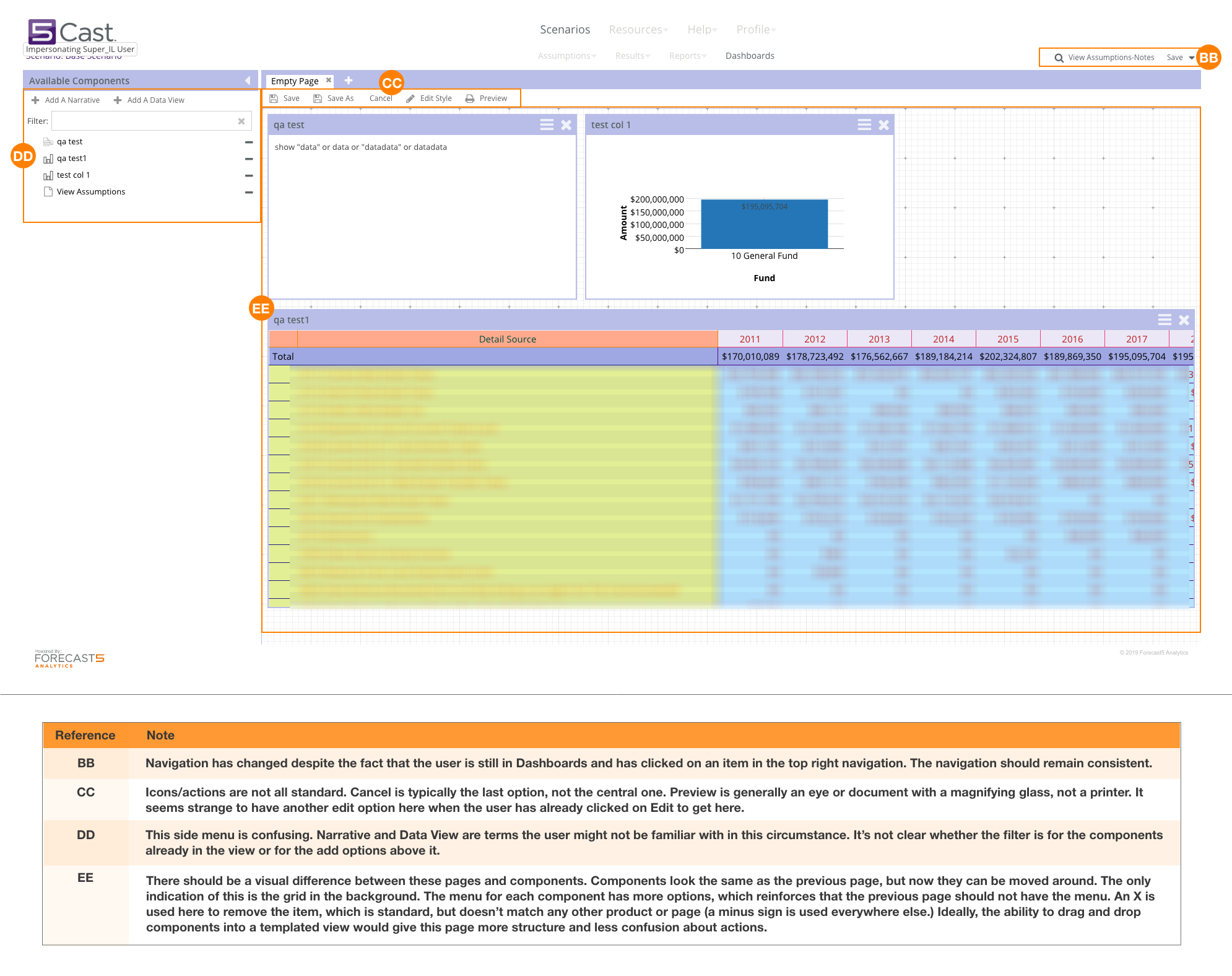


I started with a competitive analysis of existing popular dashboard builders, creating a matrix of features and determining which were available in each product, which settings could be turned on or changed, and which were the default settings, and compared that to the existing tool, which fell short on many levels.
I also completed a heuristic evaluation of the current tool to identify opportunities for improvement.
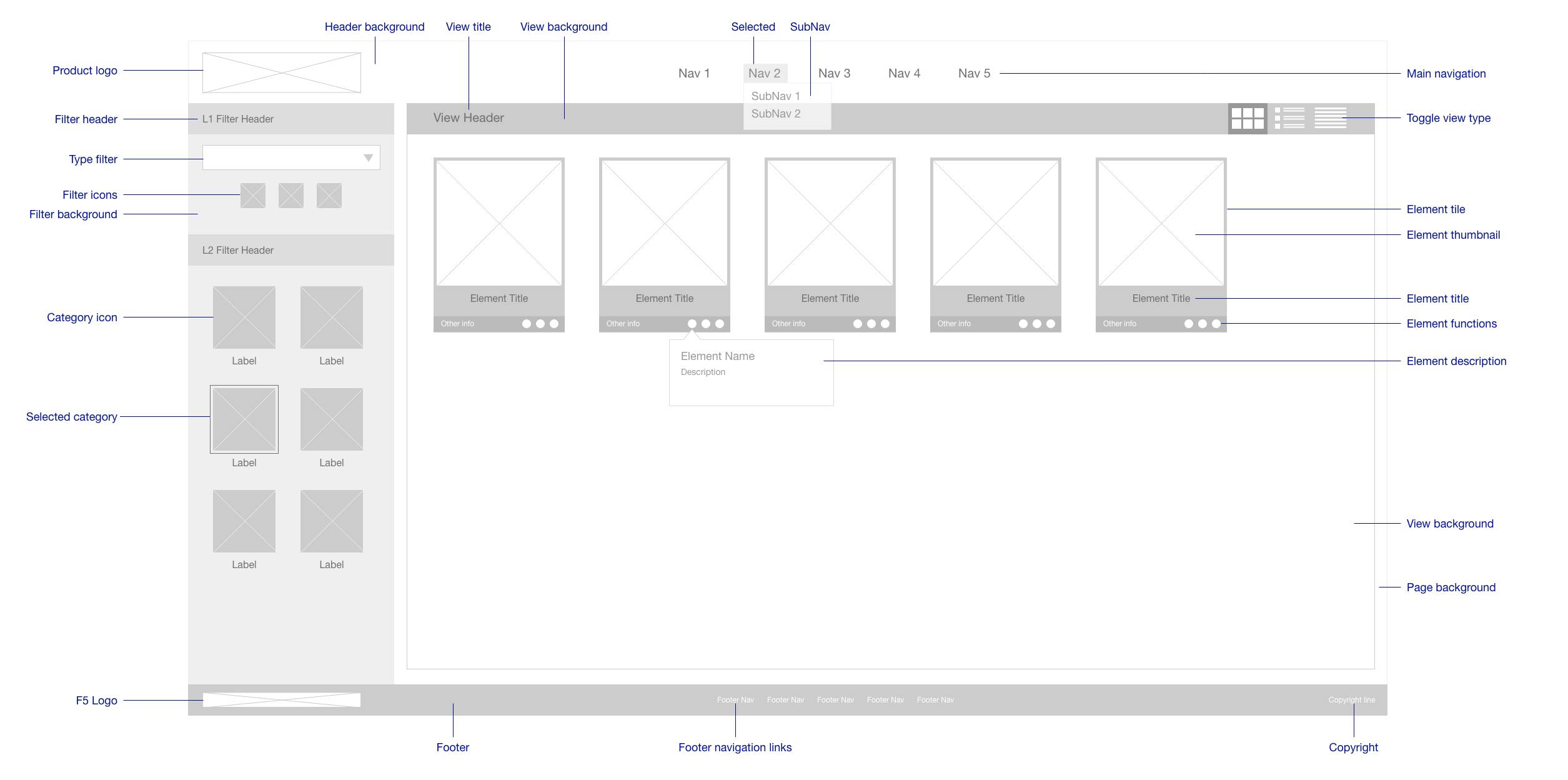

Armed with this information, I met with the stakeholders (the product owners/advisors and the head of development) and discussed pain points, client-requested features, advisor-requested features, and overall usability. We also discussed the types of users who would be using the application, using personas created earlier for the suite of applications, and brainstormed some solutions to the pain points, discussing features that could be built in a reasonable timeframe, as well as solutions that would work for all the products.


My position at this company did not allow me direct access to any customers. I had to rely on the product advisors - who spoke with several customers daily - to provide information and to work with customers on testing out potential solutions. This led me to working directly with the advisors and product owners instead of the larger group when doing preliminary designs.
When we reviewed the work with the larger group, it became clear that development leadership and the product owners were not in agreement with what the goal was. The CTO wanted to develop a tool that made it easier for advisors to create dashboards. The product owners wanted a tool that would work primarily for clients, but that advisors could also use when necessary. Ultimately, because the project could not proceed without development resources, we resolved to create the MVP tool initially for advisors as the CTO requested.
